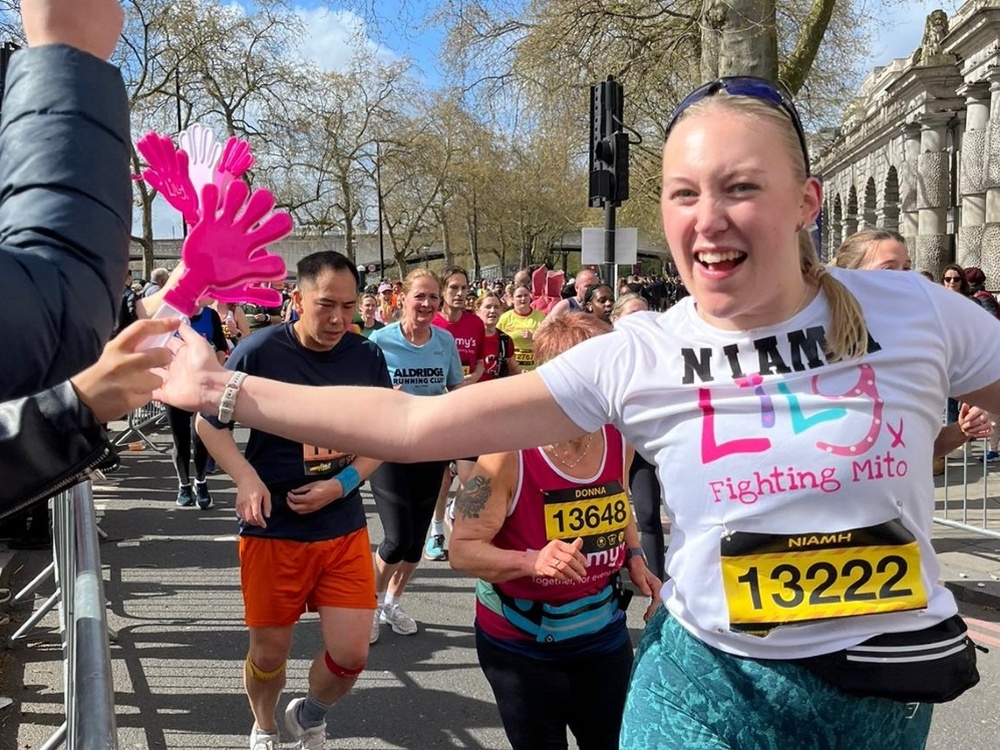Running requires balanced strength in both legs. Often, one leg compensates for the weaker side, which can lead to imbalances and injury. In these home workouts for runners, single-leg exercises like deadlifts and squats are perfect for evening out strength, but they’re challenging! Start with double-leg exercises like full squats and calf raises, then progress to single-leg variations as your strength grows.
5 running strength exercises you can do at home
The five exercises below require no special equipment and can easily be done at home. These techniques are great for strengthening the legs and core muscles. Some require good balance; if you find that tricky, try lightly holding onto a fixed object such as an item of furniture while you do them.
1. Single leg deadlift
Balancing on one leg with a slight bend in that knee, reach down towards the floor allowing your other leg to extend behind you, keeping your spine neutral. Aim for your upper body to reach a position that is parallel to the floor before coming back up to your start position. If you can keep the extending leg off the ground in between each repetition, you’ll be working the other leg a lot harder and challenging your balance.
2. Single leg squats
Balancing on one leg, hold your arms out straight in front of you and extend your other leg out in front, keeping it off the floor. Squat down, keeping your spine neutral, but with a slight lean forward from the hips. You should feel your weight going into the heel of your foot. Squat as low as you can without allowing your heel to lift off the floor before returning to the starting position.
3. Single leg calf raises
Balancing on one leg, bend your knee slightly (don’t lock the knee straight), and raise your heel off the ground, coming up onto your toes. Then slowly lower your heel back down to the floor.
4. Forward lunges
Keeping your spine neutral and your upper body upright, take a big step forward with one leg, and lower the knee of your other leg towards the floor. Your front knee should be bent at about 90 degrees, aligned directly above the ankle (if your knee is further forward than your toes, take a larger step). Now, without lifting your back foot off the floor, push yourself upward and return to the starting position.
5. Plank variations
Forearm plank: rest your weight on your forearms whilst lying face down on the floor. Now lift yourself up so that only your toes and forearms are in contact with the ground. Ensure you’re forming as straight a line as possible from your ankles to your head, avoiding any sagging at the hips. Hold for between 10 and 40 seconds.
Side plank: lying on your side, lift your body up off the floor, balancing only on your forearm and the side of your foot (with the other foot stacked on top or on the floor in front of the lower leg). Forming a straight line from your ankles to your armpit, reach up towards the ceiling with your other arm and hold this position for between 10 and 40 seconds.

